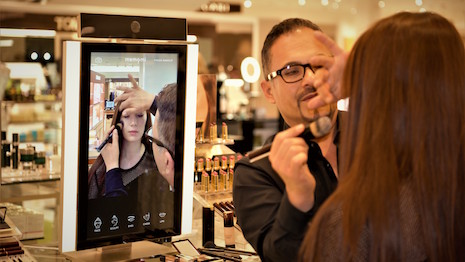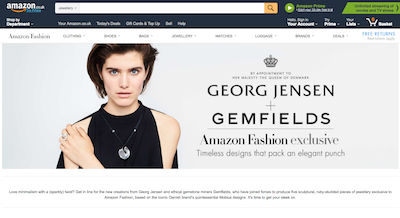 Social media response often drives consumer purchases; Image credit: Shiseido Group
Social media response often drives consumer purchases; Image credit: Shiseido Group
Retailers who provide in-store WiFi are no longer offering a luxury amenity, since it is now seen as the norm and is vital to appeal to customers, according to HRC Retail Advisory.
In a new study from the research firm, findings showed that word of mouth is still the main avenue for consumers looking for recommendations on products. However, the channels in which these recommendations are delivered to consumers have shifted toward the digital world with YouTube tutorials and social media feedback, especially for the beauty industry.
“Most surprising is the reliance on friends and peers to influence their purchases and the ongoing power and influence they have in the household,” said Farla Efros, president of HRC Retail Advisory, Northbrook, IL. “Additionally, the importance of social media sites like YouTube for beauty tutorials, for viewing purposes only as they don't practice what they watch – they go in-store to experience and learn.”
HRC surveyed 1,350 individuals in North America on their attitudes, behaviors and influences behind their purchasing decisions.
Connectivity for stores
A strong WiFi connection at retail locations is highly important to 90 percent of respondents for HRC’s survey.
The use of in-store mobile technology in terms of payments is growing. Sixty-eight percent of millennials are interested in using a retailer’s mobile payment in stores instead of traditional payments and 64 percent of Gen Z respondents agree.
Technology in stores is growing in a wide range of sectors. For instance, connected mirrors in fitting rooms are becoming more prevalent with retailers, and millennials and responding.
For instance, millennials who are interested in “Magic Mirrors” in dressing rooms to share social media images make up 66 percent of respondents. However, that is 50 percent more than those in the 35 to 41 age group.
 The Memory Makeover at Le Métier de Beauté counters at Neiman Marcus
Facebook and YouTube are the main drivers in social media usage, with 60 percent of both Gen Z and millennials claiming to use Facebook daily and 55 percent saying the same for YouTube.
About 40 percent of respondents claimed that social media feedback influenced their purchase decisions. Some millennials have even returned purchases after discovering negative social media feedback, with 25 percent claiming to do so.
Generation Z’s return rates are even higher with 62 percent.
Amazon and discount retailers are the driving outlets for beauty fans in terms of purchasing. More than half of Gen Z, 55 percent, claimed that their beauty purchases in the last six months came from discount stores and 35 percent claimed to have bought from Amazon.
Millennials that shopped from Amazon made up 45 percent, and 49 percent purchased from discount stores.
The Memory Makeover at Le Métier de Beauté counters at Neiman Marcus
Facebook and YouTube are the main drivers in social media usage, with 60 percent of both Gen Z and millennials claiming to use Facebook daily and 55 percent saying the same for YouTube.
About 40 percent of respondents claimed that social media feedback influenced their purchase decisions. Some millennials have even returned purchases after discovering negative social media feedback, with 25 percent claiming to do so.
Generation Z’s return rates are even higher with 62 percent.
Amazon and discount retailers are the driving outlets for beauty fans in terms of purchasing. More than half of Gen Z, 55 percent, claimed that their beauty purchases in the last six months came from discount stores and 35 percent claimed to have bought from Amazon.
Millennials that shopped from Amazon made up 45 percent, and 49 percent purchased from discount stores.
 Georg Jensen x Gemfields working with Amazon
However, the in-store shopping experience is important to millennials with 34 percent claiming this influences their beauty purchases. Only 11 percent of Gen Z are influenced by the in-store experience.
Additional insight
Personal luxury goods are the most attractive sector for mergers and acquisitions, according to other information from Deloitte.
Deloitte’s head of merger and acquisition advisory, speaking during the “Investment and Private Equity in the Fashion & Luxury World” session at FT’s Business of Luxury Summit May 16, shared new findings on M&A trends between 2015 and 2016, and looking forward to 2018. Forecasting the investment habits of luxury conglomerates and private equity underscores the health of the market (see more).
Also, successful international ecommerce strategies go beyond translating a Web site into consumers’ local languages, according to a another report from L2.
Cross-border ecommerce opens up brands to shoppers in countries that are growing more rapidly than established, saturated markets such as the United States and Europe, but retailers should do their due diligence before making a move. To make headway with global consumers, localization efforts should deliver both market-specific content and commerce features (see more).
“Millennial and Generation Z’s use of technology in-store, their need to stay connected to friends via social media while they shop, and how they’re shopping beauty trends is changing consumer spending patterns,” HRC Retail Advisor's Ms. Efros said. “While the latter generation was born with a smartphone in hand, it doesn't keep them from shopping – and even preferring to shop – in bricks-and-mortar stores, as long as they have access to their ever-important social network.
“Generation Z in not only powerful on their own, but they are the ones dragging their millennial parents, who prefer to shop online, back into the mall as well,” she said. “Understanding these consumer segments and how they apply to a retailer’s business will be essential, as both of these generations will be crucial to retail strategies going forward.”
Georg Jensen x Gemfields working with Amazon
However, the in-store shopping experience is important to millennials with 34 percent claiming this influences their beauty purchases. Only 11 percent of Gen Z are influenced by the in-store experience.
Additional insight
Personal luxury goods are the most attractive sector for mergers and acquisitions, according to other information from Deloitte.
Deloitte’s head of merger and acquisition advisory, speaking during the “Investment and Private Equity in the Fashion & Luxury World” session at FT’s Business of Luxury Summit May 16, shared new findings on M&A trends between 2015 and 2016, and looking forward to 2018. Forecasting the investment habits of luxury conglomerates and private equity underscores the health of the market (see more).
Also, successful international ecommerce strategies go beyond translating a Web site into consumers’ local languages, according to a another report from L2.
Cross-border ecommerce opens up brands to shoppers in countries that are growing more rapidly than established, saturated markets such as the United States and Europe, but retailers should do their due diligence before making a move. To make headway with global consumers, localization efforts should deliver both market-specific content and commerce features (see more).
“Millennial and Generation Z’s use of technology in-store, their need to stay connected to friends via social media while they shop, and how they’re shopping beauty trends is changing consumer spending patterns,” HRC Retail Advisor's Ms. Efros said. “While the latter generation was born with a smartphone in hand, it doesn't keep them from shopping – and even preferring to shop – in bricks-and-mortar stores, as long as they have access to their ever-important social network.
“Generation Z in not only powerful on their own, but they are the ones dragging their millennial parents, who prefer to shop online, back into the mall as well,” she said. “Understanding these consumer segments and how they apply to a retailer’s business will be essential, as both of these generations will be crucial to retail strategies going forward.”
